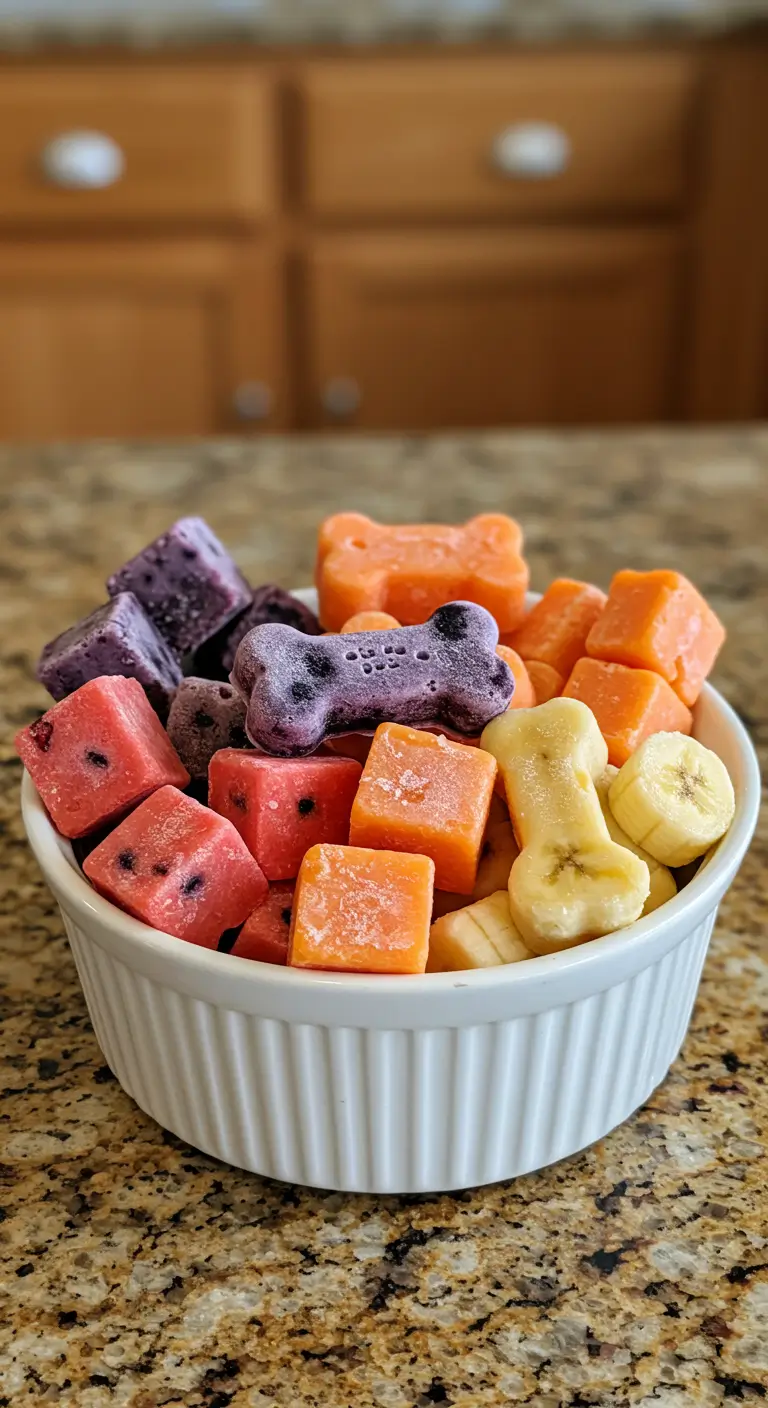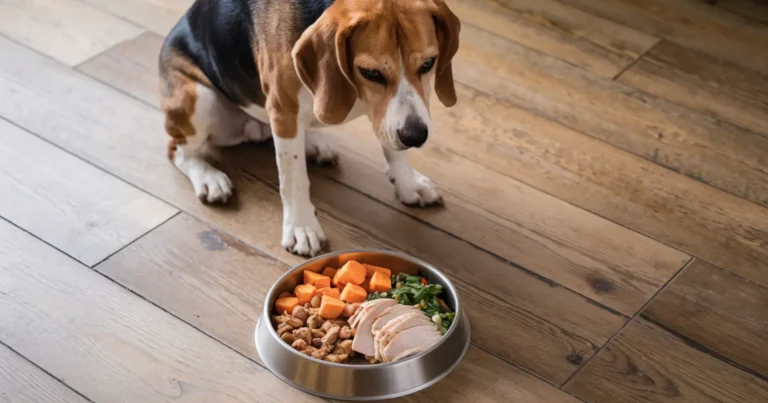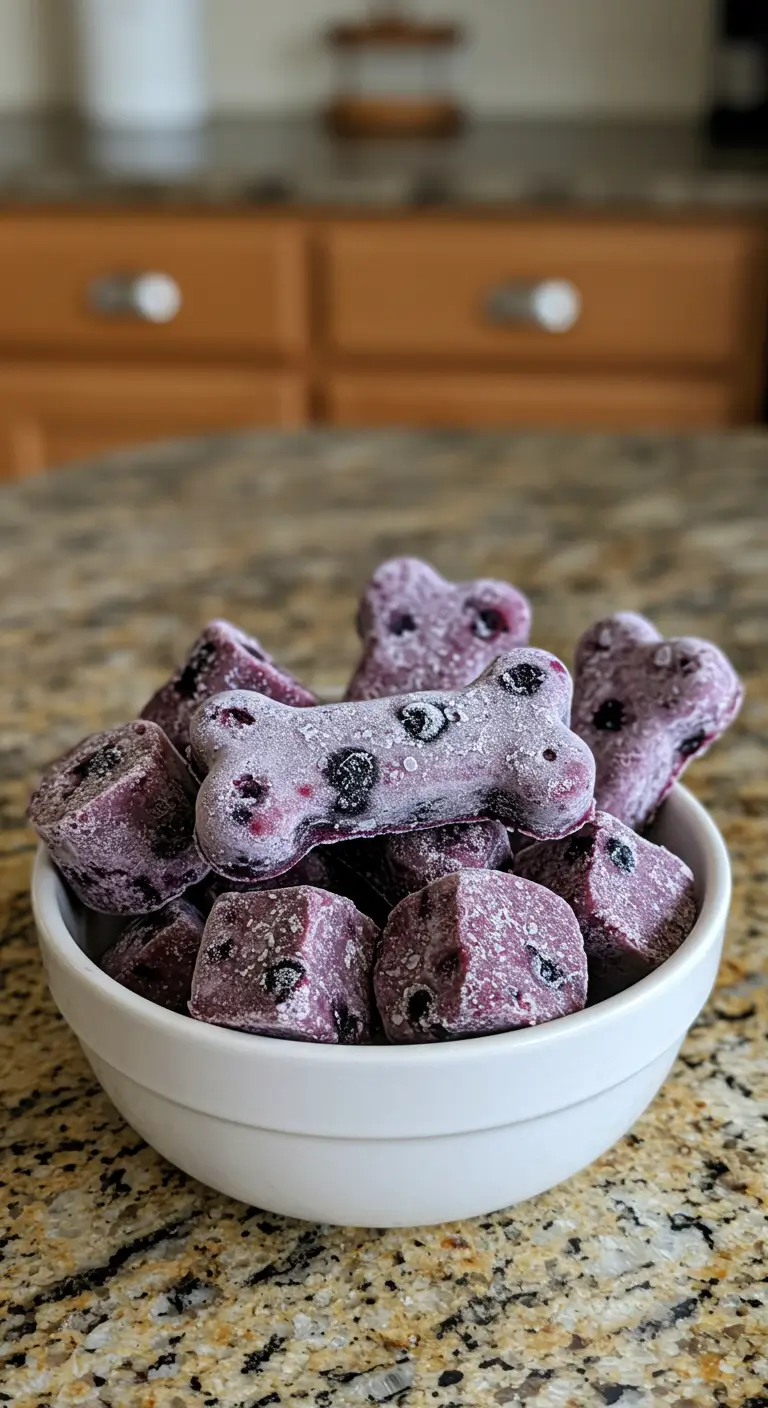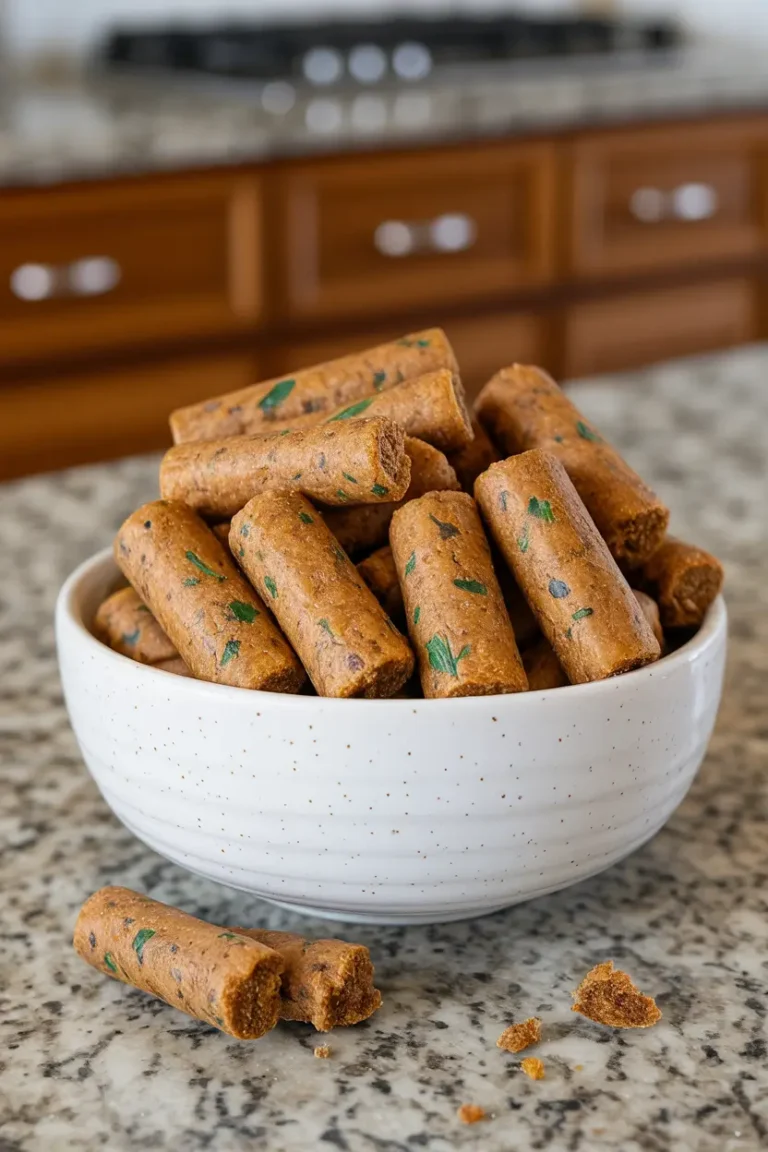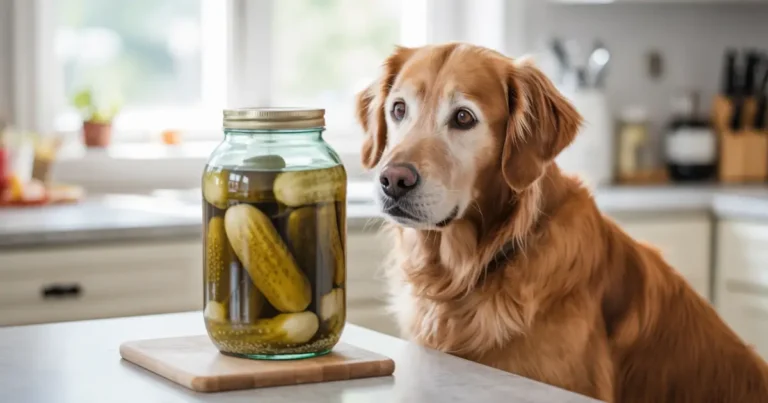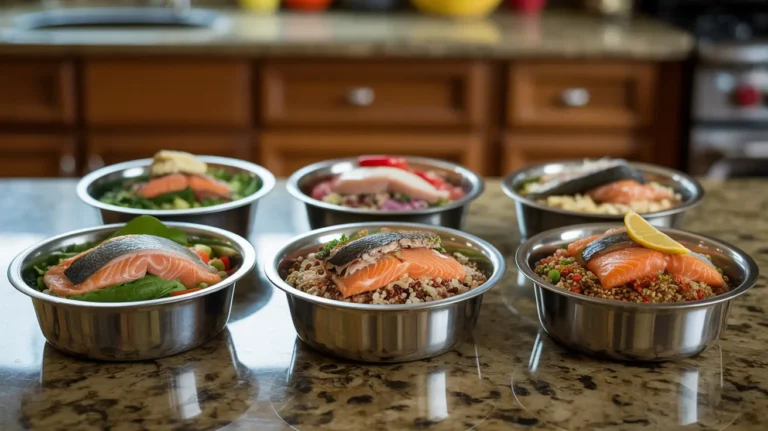8 Refreshing Frozen Dog Treats for Hot Summer Days
Last week, I caught Benji sprawled out on our kitchen tiles, panting like he’d just run a marathon around the neighborhood. The thermometer read 89°F, and our poor rescue beagle was clearly feeling every degree of that summer heat. That’s when I realized something important: while I was reaching for ice cream to cool down, Benji had no such luxury.
Summer brings joy and outdoor adventures, but it also brings serious challenges for our dogs. Unlike humans, dogs can’t simply shed their fur coats or grab a cold drink from the fridge when temperatures soar. However, there’s a simple, delicious solution that’s been gaining popularity among dog parents everywhere: frozen dog treats. These icy delights provide relief from sweltering temperatures while offering mental stimulation and nutritional benefits that store-bought alternatives often lack.
Table of Contents
Why Frozen Dog Treats Work for Summer Relief
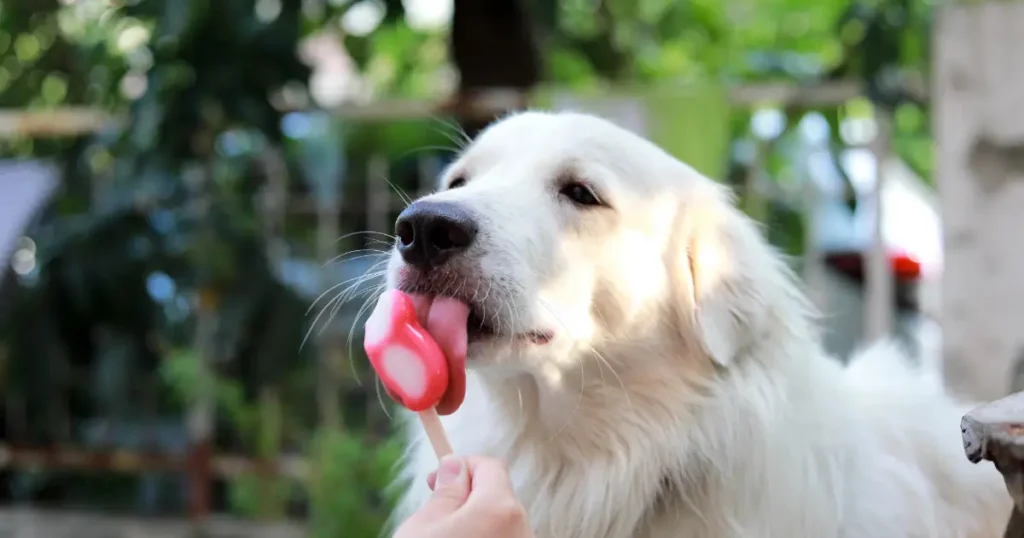
The Science Behind Canine Cooling
Dogs regulate their body temperature through a complex system that differs significantly from human thermoregulation. Understanding how dogs cool themselves helps explain why frozen treats are so effective for summer relief.
Dogs primarily cool themselves through several mechanisms:
- Panting is the process of removing warm air from the lungs and bringing in colder air.
- Limited sweating – occurs only through paw pads and nose
- Seeking cool surfaces – like tile floors, concrete, or shaded ground
- Reduced activity levels – conserving energy during hot periods
- Behavioral adaptations – finding shade, drinking water, and avoiding exertion
In dogs, the respiratory system serves as the main cooling system. When a dog pants, warm air from their lungs is expelled while cooler environmental air is drawn in. This rapid breathing also facilitates evaporation from the tongue and respiratory tract, which helps lower body temperature. However, this system becomes less efficient in high humidity or extreme heat conditions.
Frozen dog treats work by providing internal cooling that complements the natural panting process. When consumed slowly, these treats help lower core body temperature from within while providing essential hydration. This dual action makes frozen treats particularly effective during hot weather conditions.
Veterinary-Approved Benefits

According to Dr. Jerry Klein, Chief Veterinarian at the American Kennel Club, frozen treats can be an excellent way to help dogs stay cool while providing hydration and nutrition. The gradual consumption process allows dogs to cool down without the digestive shock that can occur from consuming large amounts of cold substances at once.
Key veterinary-endorsed benefits include:
- Internal temperature regulation through gradual cooling
- Enhanced hydration via high water-content ingredients
- Mental stimulation during hot weather confinement
- Stress relief and anxiety reduction when outdoor activities are limited
- Nutritional supplementation through natural ingredients
Dr. Mandala Hunter-Ishikawa from Animals Asia emphasizes that “keeping your furry friend cool and hydrated is essential, and what better way to do that than with refreshing cooling treats?” According to her, frozen dog treats offer mental stimulation in addition to physical cooling.
Hidden Hydration Advantages
Many frozen dog treats contain high water content ingredients like watermelon, cucumber, or diluted broths. This hidden hydration helps combat dehydration, a serious concern during hot weather. Dogs who are reluctant to drink plain water often eagerly consume these frozen alternatives.
| Ingredient | Water Content | Additional Benefits |
|---|---|---|
| Watermelon | 92% | Vitamins A, B6, C, natural electrolytes |
| Cucumber | 96% | Probiotics, protein, and calcium |
| Plain Yogurt | 85% | Minerals, amino acids, and flavor |
| Bone Broth | 95% | Beta-carotene, potassium, and vitamin C |
| Cantaloupe | 90% | Beta-carotene, potassium, vitamin C |
Dogs require approximately one ounce of water per pound of body weight daily under normal conditions. During hot weather, this requirement can increase by 50% or more. Frozen dog treats can contribute significantly to meeting these increased hydration needs.
The Eight Frozen Dog Treats Categories
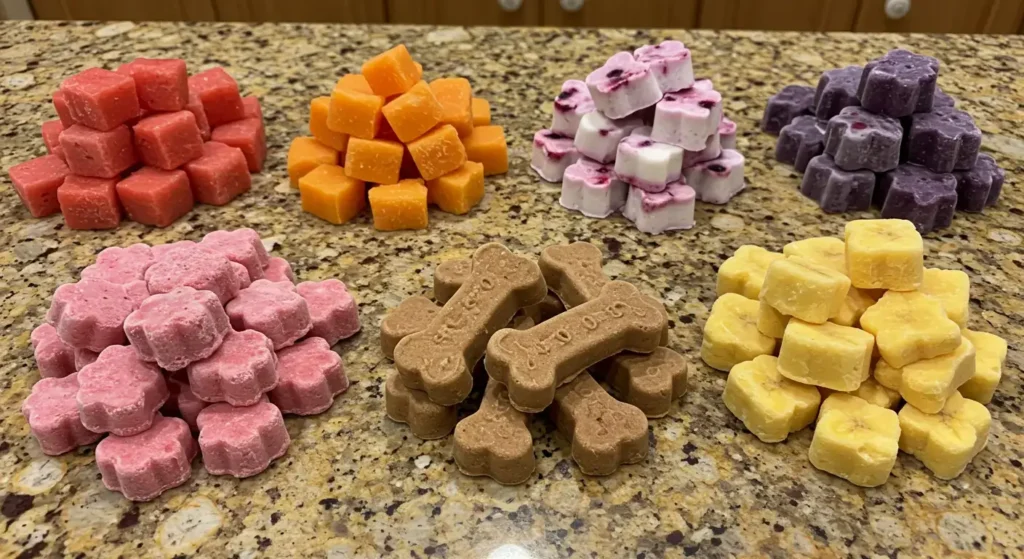
Creating homemade frozen dog treats opens up endless possibilities for keeping your pup cool and satisfied. Each category offers unique flavors, textures, and nutritional benefits that cater to different preferences and dietary needs.
Fruit-Based Frozen Delights
Watermelon & Mint Coolers represent the ultimate hydrating treat combination. Watermelon contains 92% water content, making it one of the most hydrating fruits available to dogs. The natural sugars provide quick energy, while the high water content aids in temperature regulation.
Watermelon offers numerous nutritional benefits:
- High in vitamins A, B6, and C to support the immune system
- Contains lycopene, a powerful antioxidant
- Provides potassium and magnesium for muscle function
- Natural enzymes that aid in digestion
- Low-calorie content that supports a healthy weight
Fresh mint adds a refreshing element while providing digestive benefits. Mint can naturally freshen breath and calm upset stomachs. Always use only fresh spearmint or peppermint, avoiding artificial mint flavoring.
Apple & Carrot Frozen Bites blend the richness of beta-carotene in carrots with the inherent sweetness of apples. Apples provide dietary fiber, vitamin C, and various antioxidants that support immune function. Always remove seeds and cores completely, as apple seeds contain small amounts of cyanide.
Carrots offer exceptional nutritional value as frozen treat ingredients. They’re outstanding sources of beta-carotene, which converts to vitamin A and supports eye health, immune function, and skin health.
Strawberry & Banana Frozen Bites deliver a powerhouse combination of antioxidants, potassium, and natural enzymes. Strawberries contain high levels of vitamin C, folate, and antioxidants that support immune function. The natural enzymes may also help whiten teeth naturally.
Protein-Rich Options
Peanut Butter & Banana Freezies deliver healthy fats, protein, and natural sugars that provide sustained energy while offering cooling relief. High-quality peanut butter contains monounsaturated fats that support coat health and provide essential fatty acids.
When selecting peanut butter for frozen dog treats, choose varieties without:
- Xylitol (toxic artificial sweetener)
- Added sugars or corn syrup
- Excessive salt
- Artificial preservatives
Coconut Oil & Blueberry Treats combine the medium-chain fatty acids of coconut oil with the antioxidant power of blueberries. Coconut oil supports coat health and provides antimicrobial benefits, while blueberries are considered a superfood for dogs, packed with antioxidants and vitamin C.
Vegetable Combinations
Pumpkin & Cinnamon Ice Treats provide exceptional digestive benefits while satisfying dogs with their naturally sweet flavor. Pumpkin is rich in fiber, which supports healthy digestion and can help regulate bowel movements. Pumpkin’s beta-carotene transforms into vitamin A, which supports immunological and ocular health.
Cinnamon may help control blood sugar levels and has antimicrobial qualities. Nevertheless, use only small amounts of Ceylon cinnamon because larger amounts of cassia cinnamon can be toxic to dogs.
Pumpkin Apple Pupsicles blend the digestive benefits of pumpkin with the antioxidant properties of apples. This combination provides a fiber-rich treat that helps maintain a healthy weight while delivering essential nutrients.
Dairy-Based Frozen Treats
Frozen Yogurt & Berry Cubes introduce beneficial probiotics along with vibrant flavors that dogs love. Plain, unsweetened yogurt contains live bacterial cultures that support digestive health and may boost immune function.
Essential yogurt selection criteria:
- Choose only plain, unsweetened varieties
- Avoid artificial sweeteners, especially xylitol
- Greek yogurt often provides higher protein content
- Check labels for added sugars or flavors
- Ensure live and active cultures are present
Essential Safety and Preparation Guidelines

Toxic Ingredients to Avoid
Never include these dangerous substances in frozen dog treats:
Extremely Toxic:
- Xylitol – an artificial sweetener, causing dangerous blood sugar drops
- Chocolate – contains theobromine and caffeine, both toxic
- Grapes or raisins can cause kidney failure
- Onions and garlic damage red blood cells
- Macadamia nuts cause weakness and vomiting
- Avocado – contains persin, causing digestive upset
Size and Texture Guidelines
Proper sizing prevents choking and ensures comfortable consumption:
| Dog Size | Treat Size | Texture Notes |
|---|---|---|
| Small (under 25 lbs) | Ice cube size | Smooth textures preferred |
| Medium (25-60 lbs) | Large ice cube | Can handle chunky pieces |
| Large (60+ lbs) | Multiple cubes | All textures appropriate |
Temperature Serving Tips
For dogs new to frozen treats:
- Allow treats to soften for 5-10 minutes before serving
- Start with slightly chilled rather than frozen options
- Gradually increase coldness as dogs adjust
- Senior dogs may need longer softening times
- Monitor consumption to prevent choking
Smart Frozen Dog Treats Storage and Organization
Container Selection
Different storage methods work better for different treat types:
Best Storage Options:
- Silicone molds: Easy removal, no odor retention, creative shapes
- Glass containers: Airtight, odor-free, visible contents
- Freezer bags: Bulk storage, space-efficient, economical
- Ice cube trays: Perfect portions, stackable, convenient
Labeling System
Include essential information on each container:
- Primary ingredients listed
- Date prepared for freshness tracking
- Expiration date (typically 2-3 months)
- Special notes (texture, size recommendations)
- Dietary designations (grain-free, limited ingredient)
Implement a rotation system using freezer-safe markers to ensure older treats are used first, maintaining optimal quality and preventing waste.
Why Homemade Beats Store-Bought
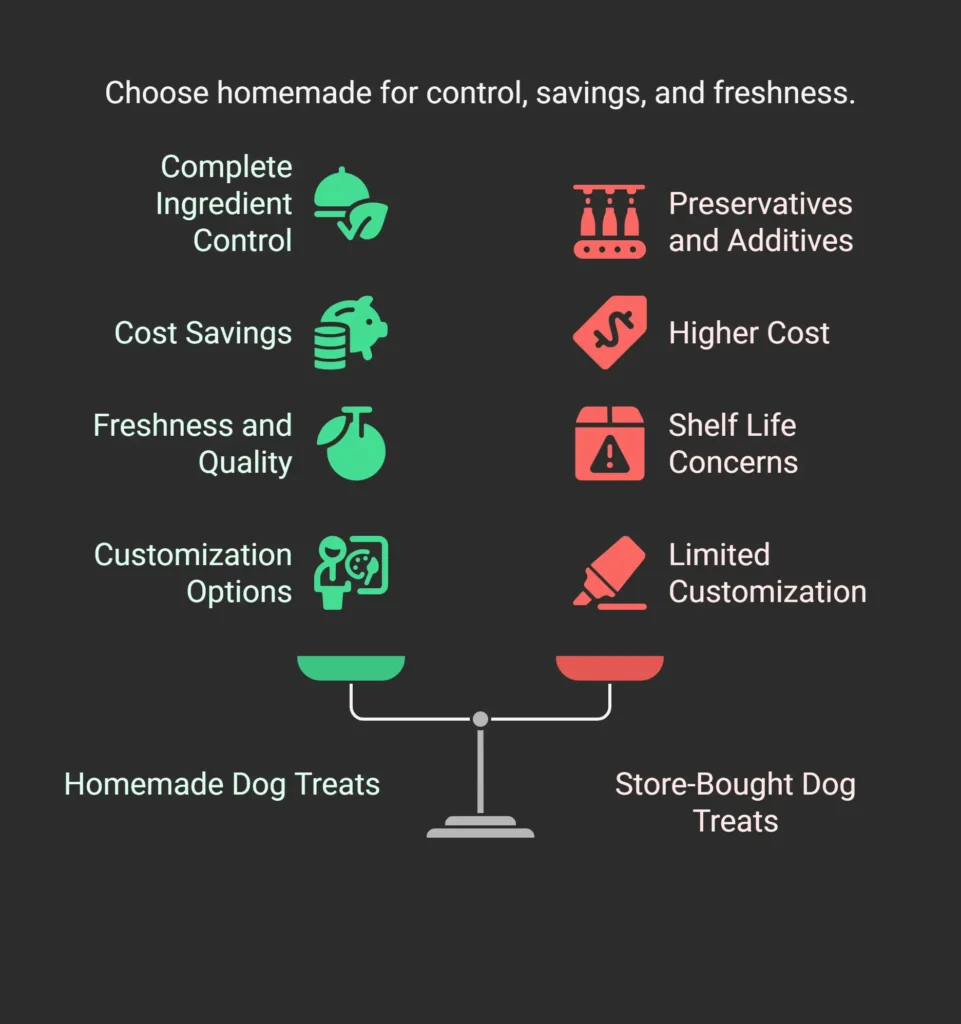
Complete Ingredient Control
You have total control over every ingredient when you make frozen dog treats at home. Commercial treats often contain preservatives like BHA and BHT, artificial colors, and flavor enhancers that provide no nutritional benefit and may cause sensitivities in some dogs.
Economic Benefits
Creating frozen dog treats at home provides significant cost savings:
- 60-80% less expensive than premium commercial alternatives
- Seasonal ingredient savings when buying produce in peak season
- Bulk preparation reduces per-serving costs significantly
- Equipment investment pays for itself quickly with regular use
Freshness and Quality Assurance
Homemade frozen dog treats contain no preservatives, ensuring peak freshness and nutritional value when served. Commercial treats may sit in warehouses or on store shelves for months before purchase, potentially degrading nutritional content and palatability.
Customization Advantages
Every dog has unique preferences, and homemade treats allow for complete customization:
- Adjust ingredient ratios for individual tastes
- Modify textures for dental requirements
- Create special dietary accommodations
- Develop seasonal variations using fresh ingredients
- Design special occasion treats for birthdays or achievements
Breed and Age-Specific Considerations
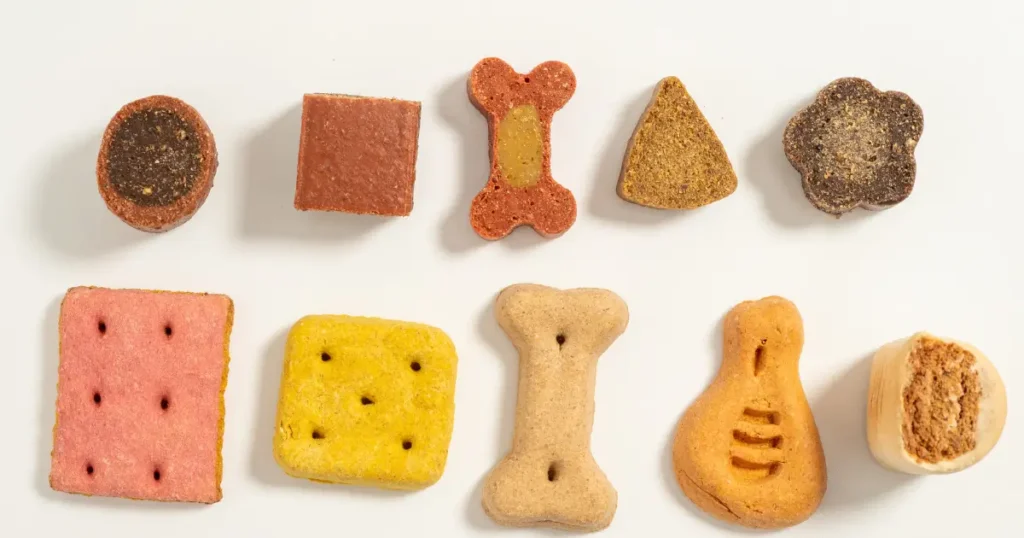
Small Breed Adaptations
Toy and small breeds require special attention due to their unique characteristics:
Specific Requirements:
- Higher metabolic rates require more frequent, smaller portions
- Choking hazard prevention through appropriate sizing
- Temperature sensitivity considerations for thin-coated breeds
- Smooth textures to accommodate smaller mouths
Large Breed Considerations
Giant breeds benefit from different approaches:
- Larger portions and chunkier textures for satisfaction
- Puzzle feeders to extend consumption time and mental stimulation
- More frequent cooling treats due to higher body heat generation
- Interactive feeding designs that provide enrichment
Puppy Guidelines
Young dogs need modified approaches for safety and development:
- Developing digestive systems requires a gentle introduction
- Softer textures for teething relief and comfort
- Smaller portions are appropriate for size and metabolism
- Veterinary approval for very young puppies under 12 weeks
Senior Dog Modifications
Older dogs often require special considerations:
- Softer textures for dental sensitivities and comfort
- Smaller portions for slower metabolisms and weight management
- Nutrient-dense ingredients provide maximum benefit
- Joint-supporting supplements when veterinarian-approved
Advanced Techniques and Interactive Designs
Creative Enhancement Methods
Transform frozen dog treats into comprehensive enrichment activities:
Interactive Ideas:
- Kong toys stuffed with frozen mixtures for an extended challenge
- Hide-and-seek treats with embedded high-value rewards
- Ice lick mats for sustained licking and calm behavior
- Puzzle feeders incorporating frozen components
- Layered designs reveal different flavors during consumption
Seasonal Adaptations
Modify recipes throughout the year for continued appeal:
- Spring: Fresh herbs like parsley for breath-freshening
- Summer: Maximum hydration with cooling ingredients
- Fall: Warming spices and seasonal vegetables like sweet potato
- Winter: Higher-energy ingredients with smaller, less cold portions
Other Treat Adventures Worth Exploring
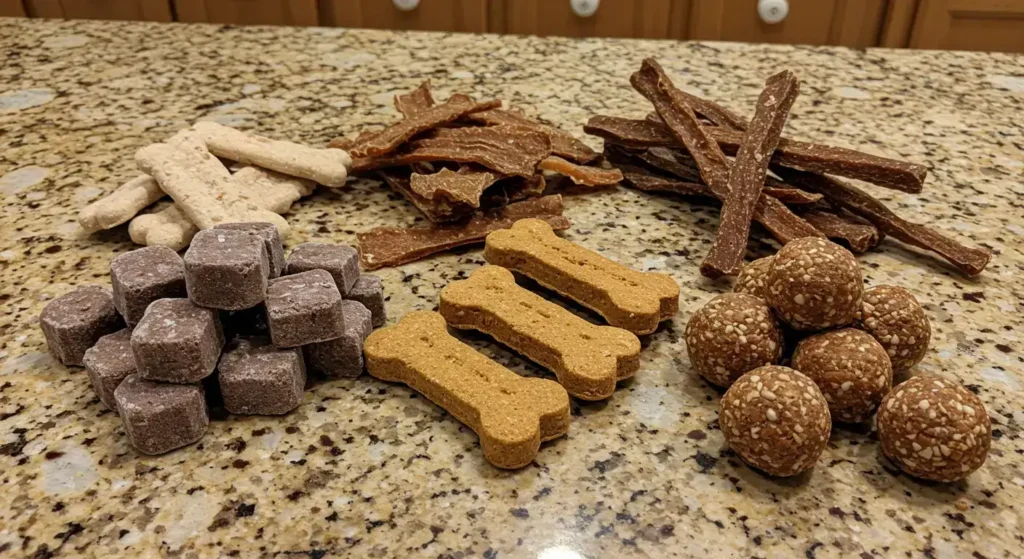
Beyond frozen options, consider creating crunchy homemade dog treats that provide different textures and experiences for year-round enjoyment.
Complementary treat styles include:
- Baked varieties for cooler months, when frozen treats are less appealing
- Dehydrated options for training rewards and portable adventures
- No-bake alternatives for quick preparation without specialized equipment
- Fermented treats provide additional probiotic benefits
Portion Control and Nutritional Balance
The 10% Rule Implementation
Treats should comprise no more than 10% of your dog’s total daily calories:
Daily treat allowances:
- 30-pound dog: approximately 70 calories from treats
- 50-pound dog: approximately 140 calories from treats
- 70-pound dog: approximately 200 calories from treats
Ingredient Caloric Planning
Calculate portions based on common ingredient calories:
- 1 cup watermelon: 46 calories
- 2 tablespoons peanut butter: 190 calories
- 1 medium banana: 105 calories
- 1 cup plain yogurt: 150 calories
- 1 cup pumpkin puree: 49 calories
Special Dietary Accommodations
- Diabetic dogs: Focus on low-sugar vegetable options like cucumber and celery
- Kidney disease: Avoid high-phosphorus ingredients, consult a veterinarian
- Overweight dogs: Emphasize high water, low-calorie ingredients
- Food allergies: Use single-ingredient treats for identification and safety
Critical Safety Reminders
Veterinary Consultation Requirements
Consult your veterinarian before introducing frozen dog treats, particularly for dogs who already have health issues. Hill’s Pet Nutrition emphasizes checking with veterinarians to ensure ingredients won’t negatively affect current health issues.
Supervision and Quality Control
To ensure proper consumption speed and keep an eye out for choking hazards, always keep an eye on dogs while they are eating frozen treats. Regular quality checks ensure treats remain safe:
Warning signs to watch for:
- Freezer burn appears as white or gray patches
- Unusual odors indicating spoilage
- Color changes suggesting ingredient degradation
- Ice crystal formation from temperature fluctuations
Key Takeaways for Summer Success
Creating frozen dog treats offers multiple benefits beyond simple cooling:
- Natural temperature regulation helps dogs manage heat stress safely and gradually
- Enhanced hydration support addresses increased summer fluid requirements effectively
- Mental stimulation provision offers valuable enrichment during hot weather confinement
- Complete ingredient control ensures safety for dogs with special dietary needs
- Cost-effective cooling solutions provide superior value compared to commercial alternatives
- Nutritional supplementation opportunities support overall health while providing relief
- Year-round adaptability allows seasonal modifications for continued enjoyment
- Simple preparation requirements make benefits accessible to all dog owners
- Extended storage capabilities enable convenient batch preparation and planning
- Veterinary-endorsed safety provides confidence in cooling methods and ingredients
Final Thoughts
As Benji and I have discovered through our summer adventures together, the joy of watching a grateful dog enjoy a perfectly crafted frozen treat is truly unmatched. These simple creations provide much more than temperature relief; they offer comfort, entertainment, and a tangible way to show our pets how much we care about their well-being during challenging weather.
The process of making frozen dog treats has become one of our favorite weekend activities. Benji seems to sense when I’m preparing his special treats, positioning himself strategically in the kitchen where he can supervise the entire operation. His excitement when I open the freezer has become a reliable indicator that we’ve chosen ingredient combinations he truly loves.
Remember that the most effective frozen dog treats are those made with love, attention to safety, and consideration for your individual dog’s needs. Start with simple combinations, observe your dog’s preferences, and gradually expand your repertoire. Soon, you’ll have a freezer full of cooling options that make even the hottest summer days manageable for your furry friend.
Frequently Asked Questions
What is the shelf life of homemade frozen dog treats?
Properly stored frozen dog treats maintain optimal quality for 2-3 months when kept in airtight containers or freezer bags. Use freezer-safe labels to track preparation dates and implement rotation to ensure older treats are used first. While treats may remain safe beyond this timeframe, texture, and flavor are best within the recommended period.
Can I give frozen dog treats to my puppy?
Puppies can enjoy frozen dog treats with appropriate modifications for their age and development. Young dogs need softer textures and smaller portions than adults. Consider allowing treats to thaw slightly before serving, and always consult your veterinarian about appropriate ingredients and frequency for your puppy’s specific age and breed.
What should I do if my dog doesn’t seem interested in frozen treats?
Some dogs require a gradual introduction to new textures and temperatures. Start with treats that have been out of the freezer for 10-15 minutes to achieve a softer consistency. You can also begin with refrigerated rather than frozen versions, gradually decreasing the temperature as your dog becomes comfortable.
Are there dogs that shouldn’t have frozen treats?
Dogs with sensitive teeth, certain medical conditions, or those prone to gulping food quickly may need special considerations. Brachycephalic breeds might have difficulty with very hard frozen treats. Always consult your veterinarian if your dog has dental issues, digestive sensitivities, or other health concerns.
How many frozen dog treats can I give my dog per day?
Follow the 10% rule: treats should comprise no more than 10% of your dog’s total daily calories. For most dogs, this means 1-2 medium frozen treats per day, depending on size and activity level. Adjust regular meals accordingly to prevent overfeeding.
Can I make frozen dog treats with ice cube trays?
Ice cube trays work excellently for portion-controlled frozen dog treats. Silicone trays perform particularly well because treats release easily without breaking. Consider having dedicated trays for dog treats to avoid flavor transfer to human ice cubes.
What’s the best way to introduce frozen treats to dogs who’ve never had them?
Introduce gradually with small portions of slightly softened treats. Allow your dog to investigate through sniffing and gentle licking before expecting full consumption. Some dogs immediately embrace frozen treats, while others need multiple exposures. Remain patient and let your dog set the pace.
References
Frozen Summer Treats for Dogs: Vet-Approved Snacks for Pups

